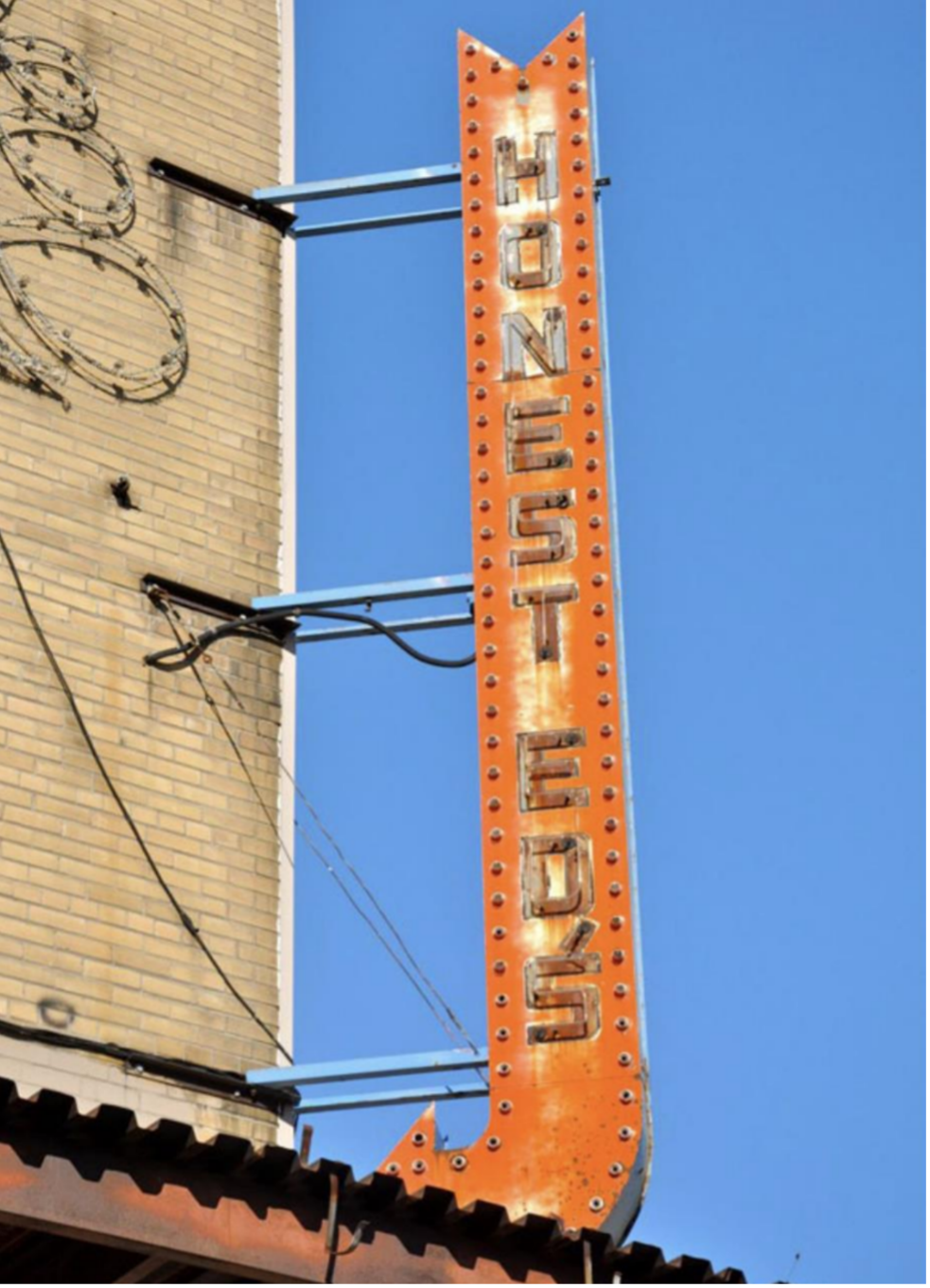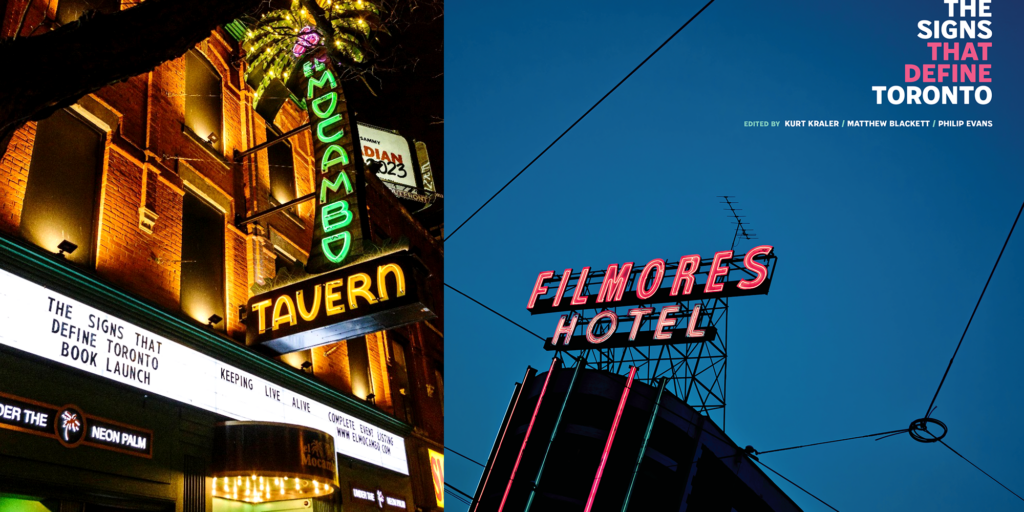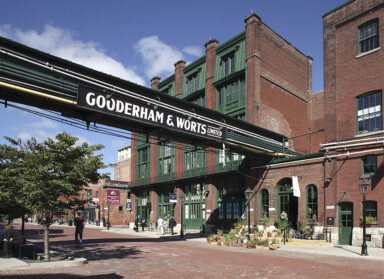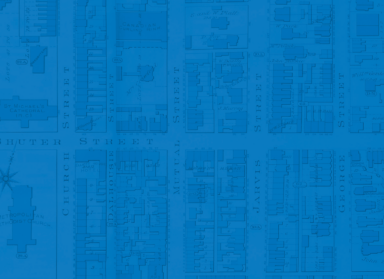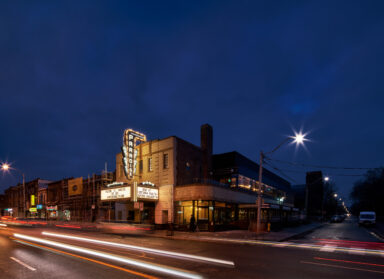It’s hard to believe it’s been a year since the marquee in front of the iconic El Mocambo nightclub announced the momentous occasion; “The Signs That Define Toronto book launch”. Held on the evening of December 1, 2022, the event played host to an enthusiastic crowd of people who gathered to celebrate Toronto signs and pick up their own copy of the The Signs That Define Toronto book. Published by ERA Architects in collaboration with Spacing, the book features the work of over 20 different contributors that delve into the history, culture, and stories of the city through its unique signage. At the event, lucious, high-resolution images from the book were splashed across TVs hanging behind the bar, offering revelers a preview of what was contained within the book’s pages. Long-time Toronto enthusiast Rob Shostak, had his costume — a re-creation of the iconic Honest Ed’s sign — on display on a mannequin for selfies, complete with miniature twinkling lights and hand painted pants inspired by sign painters Wayne Reuben and Doug Kerr.
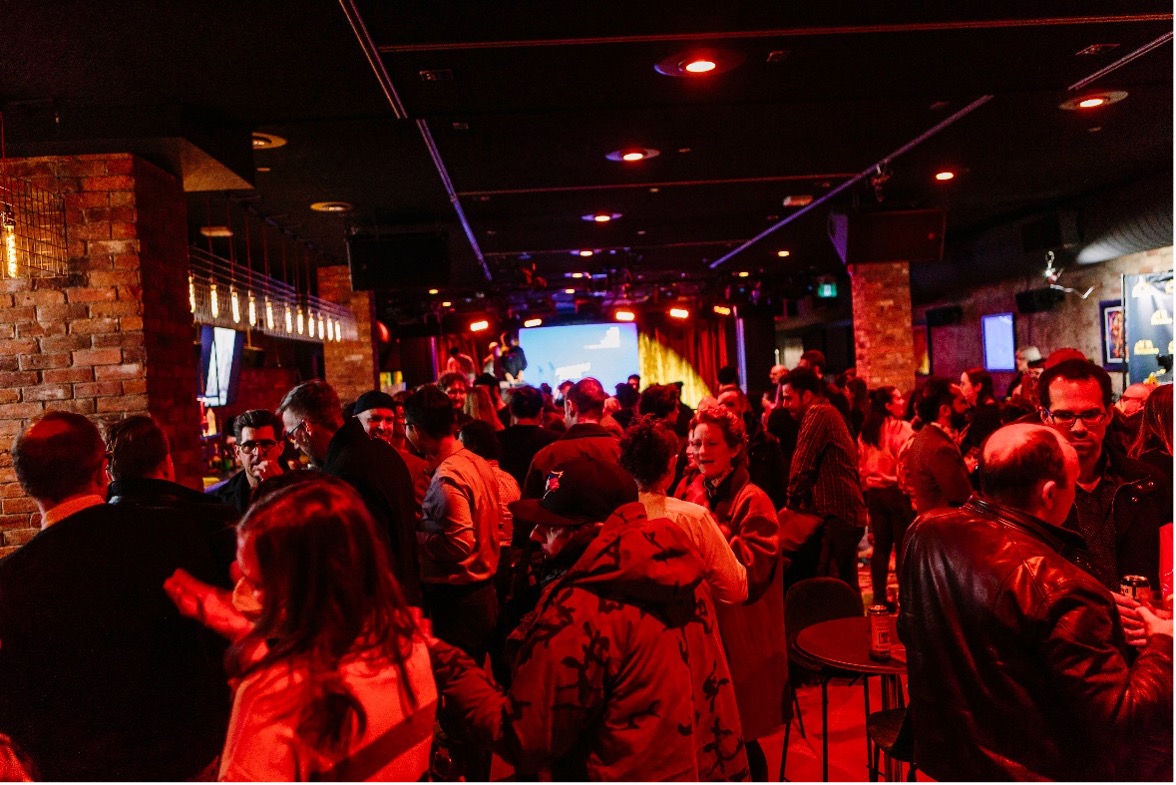
Throughout the night, El Mocambo director Mike Chalut, provided guided tours of the newly refurbished venue. Visitors were offered a rare glimpse of the facilities, including the new state-of-the-art live recording studio and memorabilia collected over the years. The original El Mocambo sign was also restored and illuminated, flanking both sides of the stage on the upper level of the venue.
Book co-editors Matthew Blackett and Kurt Kraler took to the main stage, alongside ERA founder and partner Michael McClelland, to make some short remarks. Matthew introduced the book and highlighted the importance of preserving Toronto signs while Michael advocated for expanding our appreciation of signs to include a broader range of signage styles and types. Architect Kurt Kraler spoke about how his graduate thesis research on Las Vegas inspired the book and thanked the ERA executive team for supporting the project along with the various contributors and launch party attendees.
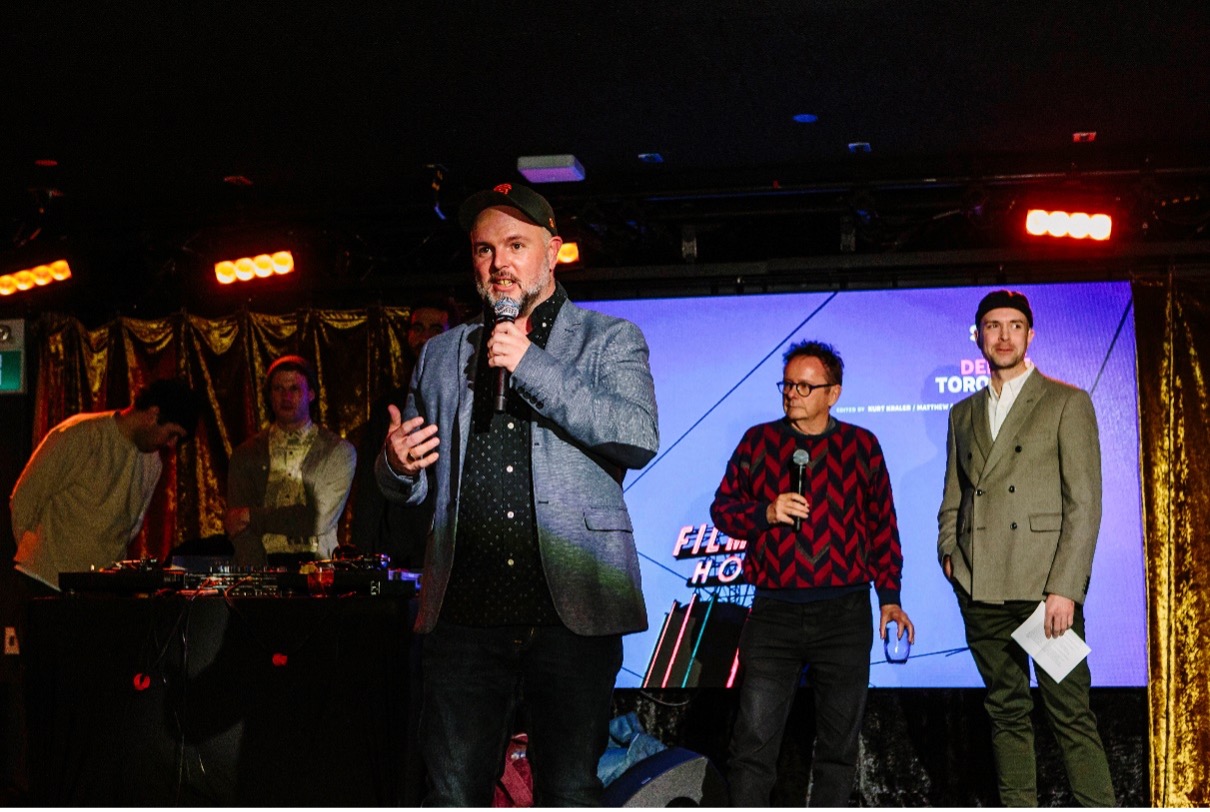
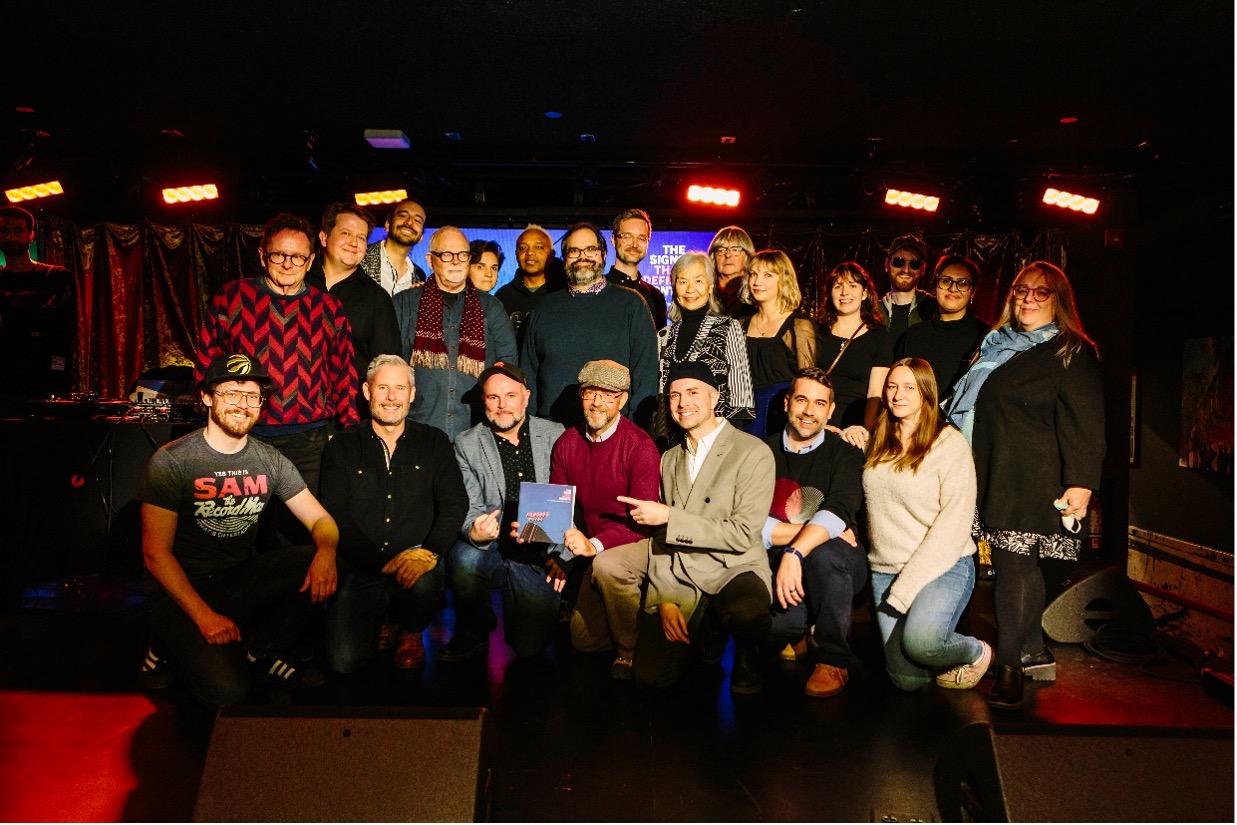
The Exhibition
Shortly after the publication of the book, Kurt received an invitation from his alma mater, the University of Waterloo School of Architecture, to curate the school’s annual Masterworks graduate thesis showcase. A call for submissions was issued in March, asking recent graduates to submit thesis work related to themes explored in the book including projects that map, trace, document, and respond to an existing commercial vernacular. After carefully reviewing all the submissions, four thesis projects were selected including: David Ogbe’s design for a renewed Temple of Afrobeats in Nigeria; Weeney Lin’s exploration of the evolution of Chinatowns in North America; Emilie O’Neill’s design for Vancouver’s sex worker population; and Kelsey Malott’s revitalization of Los Angeles’ historic Sunset Strip. Each project employed novel techniques to better understand existing contexts and the communities that buildings serve. In The Signs That Define Toronto for instance, writing about signs and the stories behind them was an approach that offered a glimpse of the occupants who lived, worked, and visited the buildings that architects built.
Kurt collaborated with the MArch graduates to craft the exhibition over several months, providing feedback and laying out the work in a 3D model. Entitled “Masterworks 2023: The Signs That Define: Finding Meaning in Architectures of Exchange,” the exhibition opened to the public on June 29, 2023 at the Design at Riverside Gallery in Cambridge, Ontario. Each project featured a large poster that spanned from floor to ceiling, serving as the figurative “billboard” for the project. The range of work on display spanned from drawings and photographs to interview transcripts and collages inspired by the Temple of Afrobeats event posters.
In September, a closing reception (sponsored by ERA Architects) was held, which included a panel discussion and presentations from book contributors Kurt Kraler and Linda Zhang, as well as Marie-Paule McDonald who was the thesis supervisor for several of the thesis projects featured in the exhibition. Each panelist presented their recent work, connecting to themes explored in the featured projects and discussed the need for architects to address existing contexts. Afterwards, a reception with refreshments was held in the gallery, offering one last look at the show before it closed on September 22, 2023.
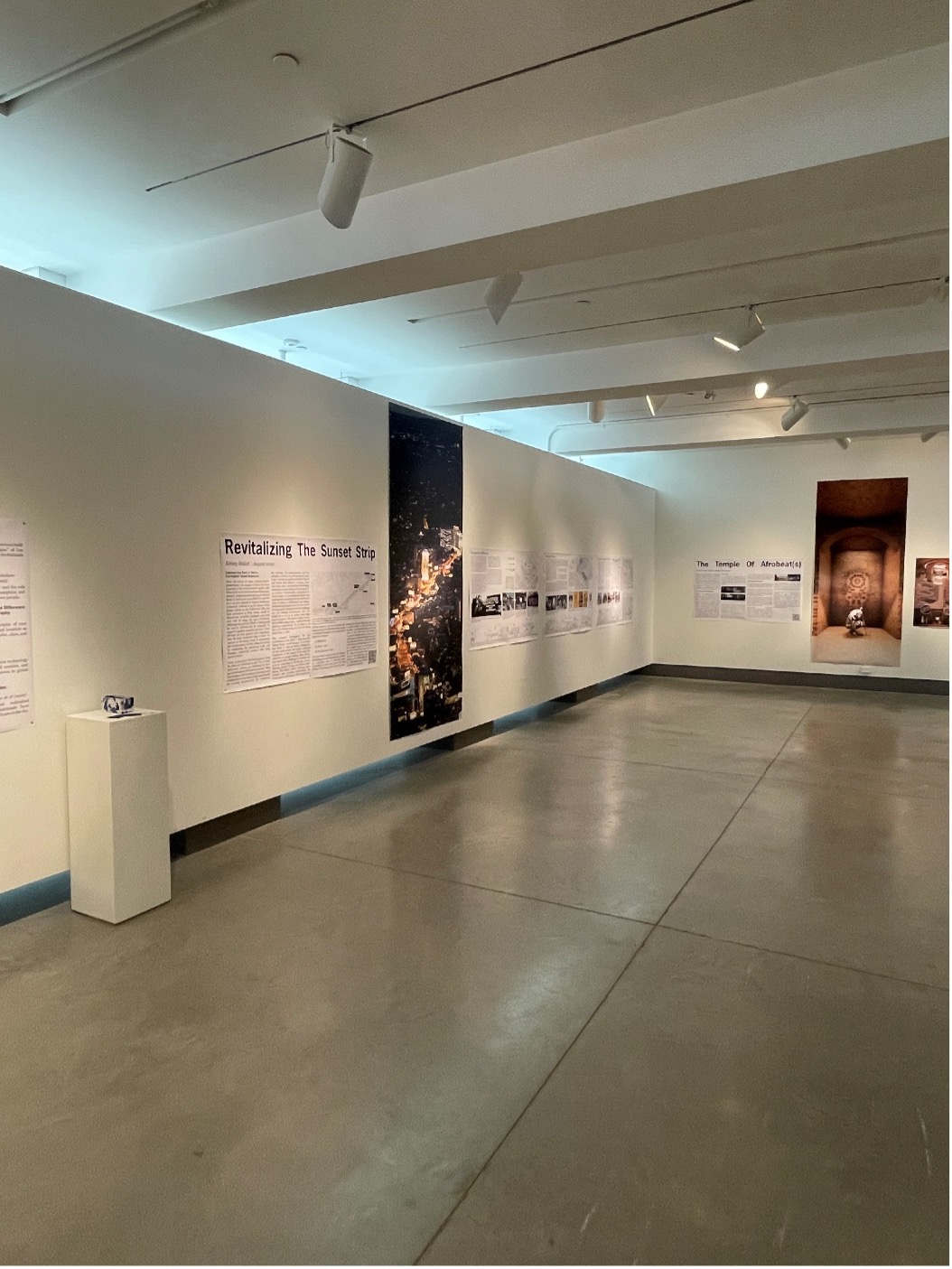
The Signs That Define Montreal and Vancouver
At the beginning of the summer, Kurt had the opportunity to visit Dr. Matt Soar and his collection of Montreal signs at Concordia University’s Loyola Campus. The Montreal Signs Project is an initiative that began in 2010 that seeks to save and restore historic commercial and civic signs in Montreal. Their website features the hidden stories of signmakers with short documentary videos and images with text descriptions. Matt often organizes walking tours of the refurbished signs that are on display in the hallways of the Communications Studies and Journalism building. Signs on display include the geometric “S” from the Steinberg supermarket sign, the cursive open channel letter sign from Monkland Taverne, as well as a vintage directory from the Métro transit system. Be sure to follow the Montreal Signs Project on Instagram for tour announcements.
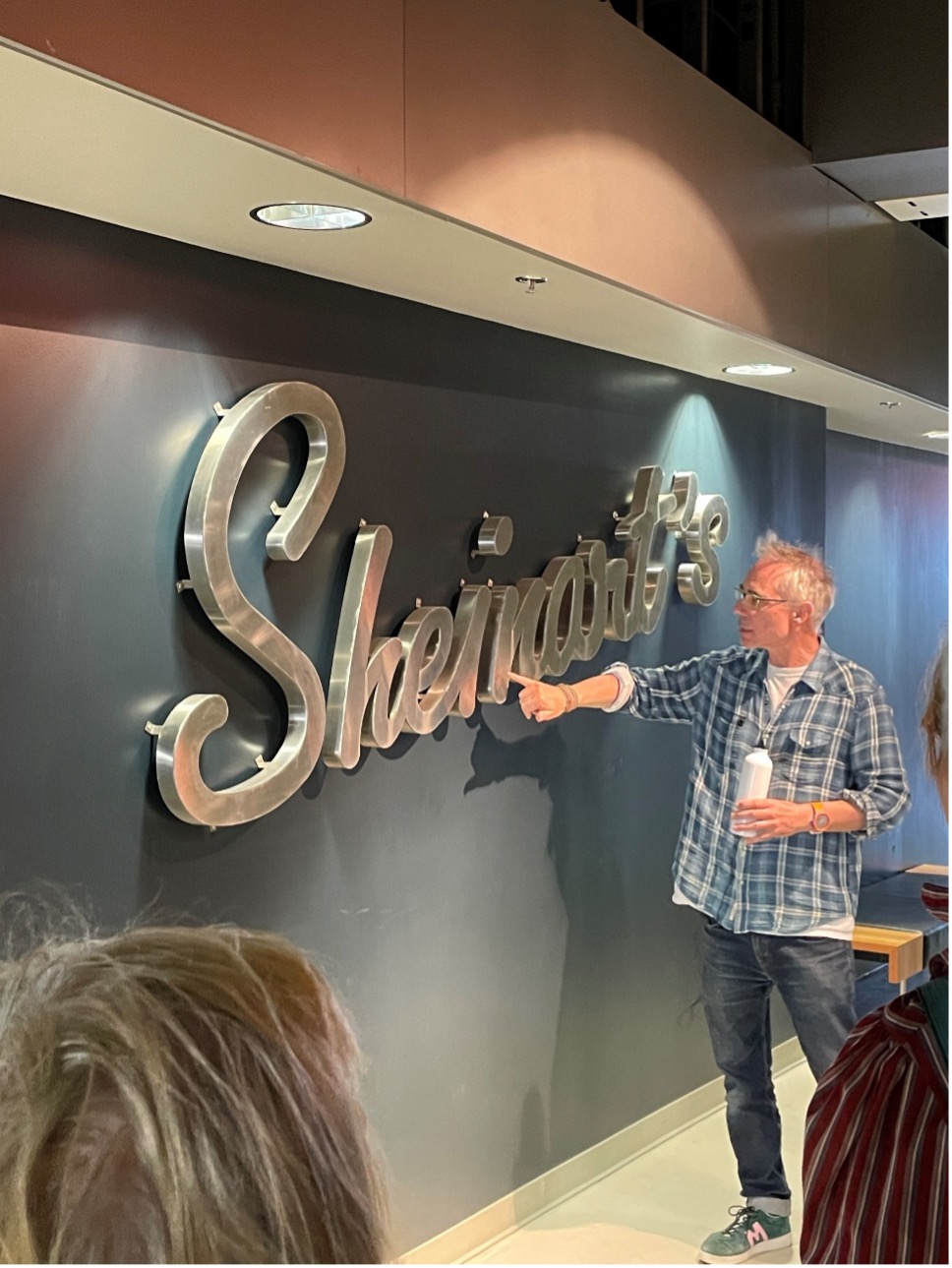
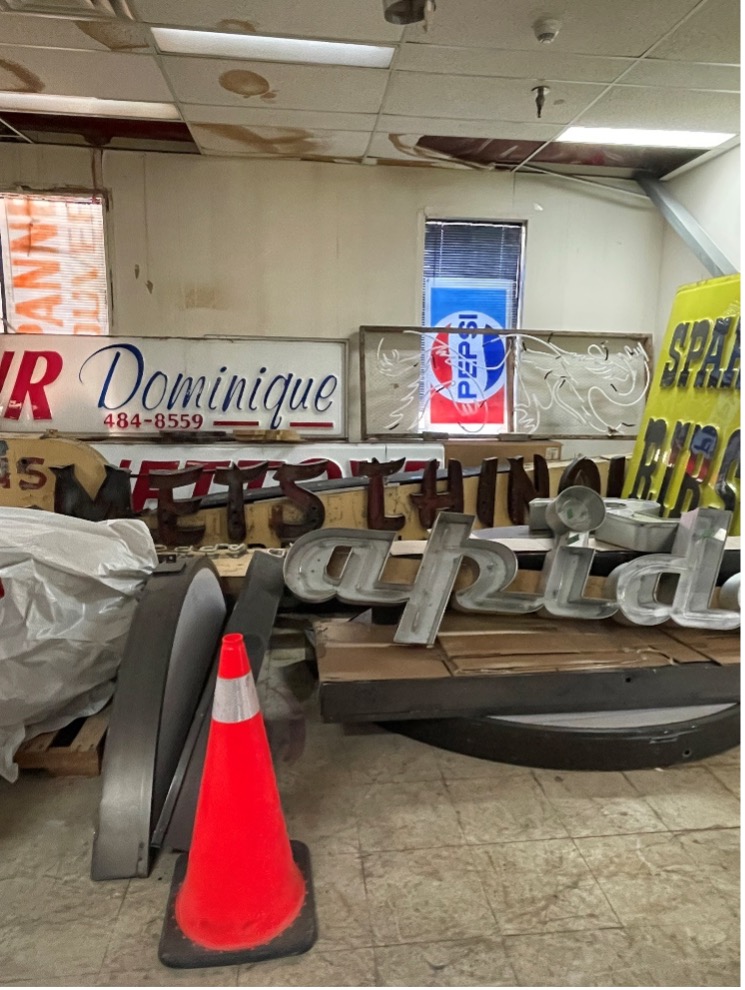
Later in the summer, Vancouver civic historian, author and heritage consultant John Atkin presented to the ERA office his work on restoring historic signs. The office heard about the importance of neon signs in illuminating Vancouver’s main commercial streets as well as his recent work on the infamous Ho Ho Restaurant neon sign in Vancouver’s Chinatown. After the presentation, there was a thoughtful discussion around the role of signage policy in shaping the look and feel of our city streets. Be sure to check out John’s virtual tour of the “Neon Vancouver Ugly Vancouver” exhibition from 2021.
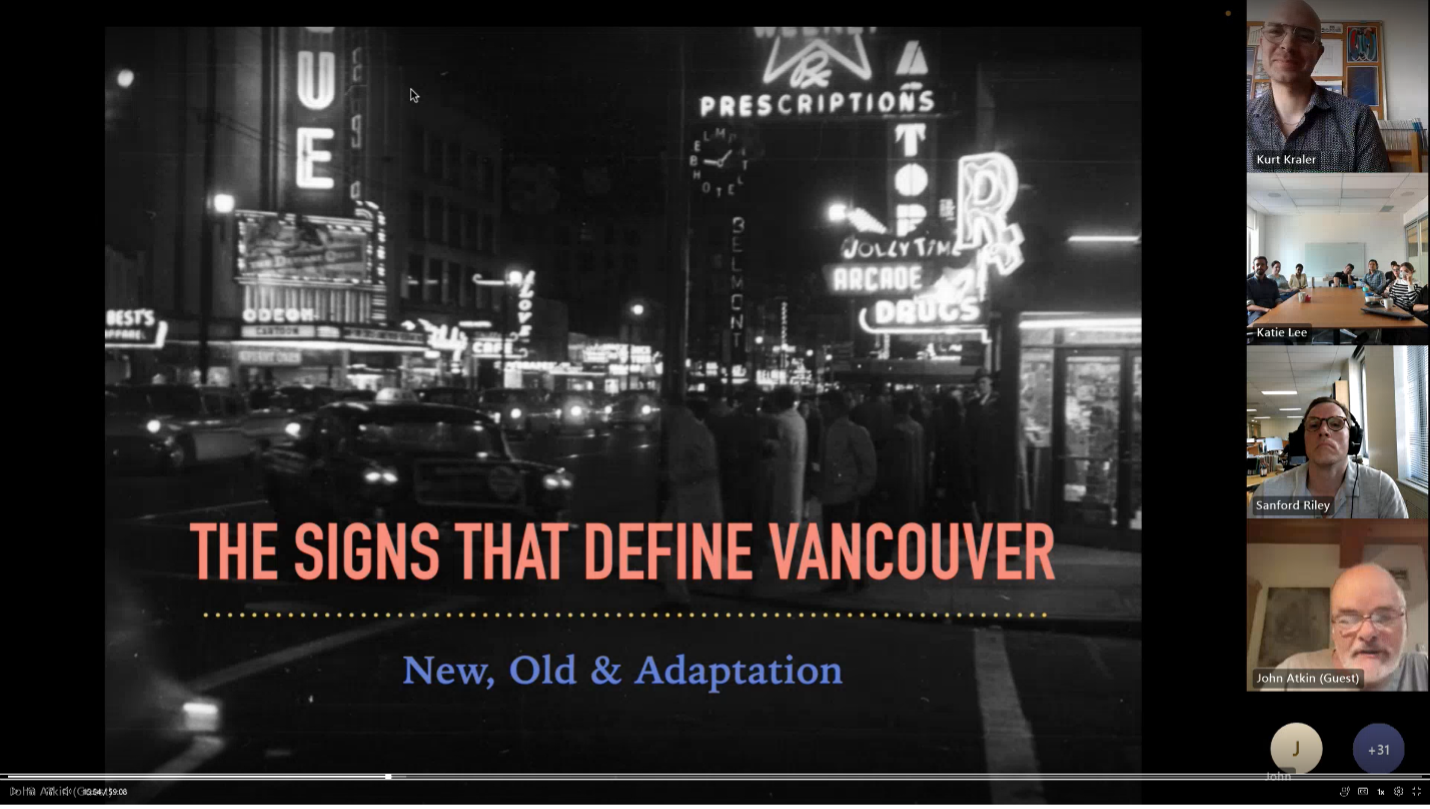
Neon Speaks
Kurt headed to San Francisco for the Neon Speaks Festival & Symposium in September. The annual event features neighbourhood walking tours and presentations from sign makers, artists, and enthusiasts. Kurt presented the neon signs of Toronto and held a Q&A afterwards. He also met fellow signage enthusiasts, including author Kathy Kikkert, the co-founders of Signs United, and miniature sign artist Chris Raley.
One highlight of the festival was a tour of the Letterform Archive, an innovative nonprofit center that organizes and makes accessible Rob Saunders’ personal collection of the letter arts. During the tour, a collection of books related to sign lettering were made available for review. If you make a visit to the archive, you may notice that a copy of “The Signs That Define Toronto” is now part of the collection as well!
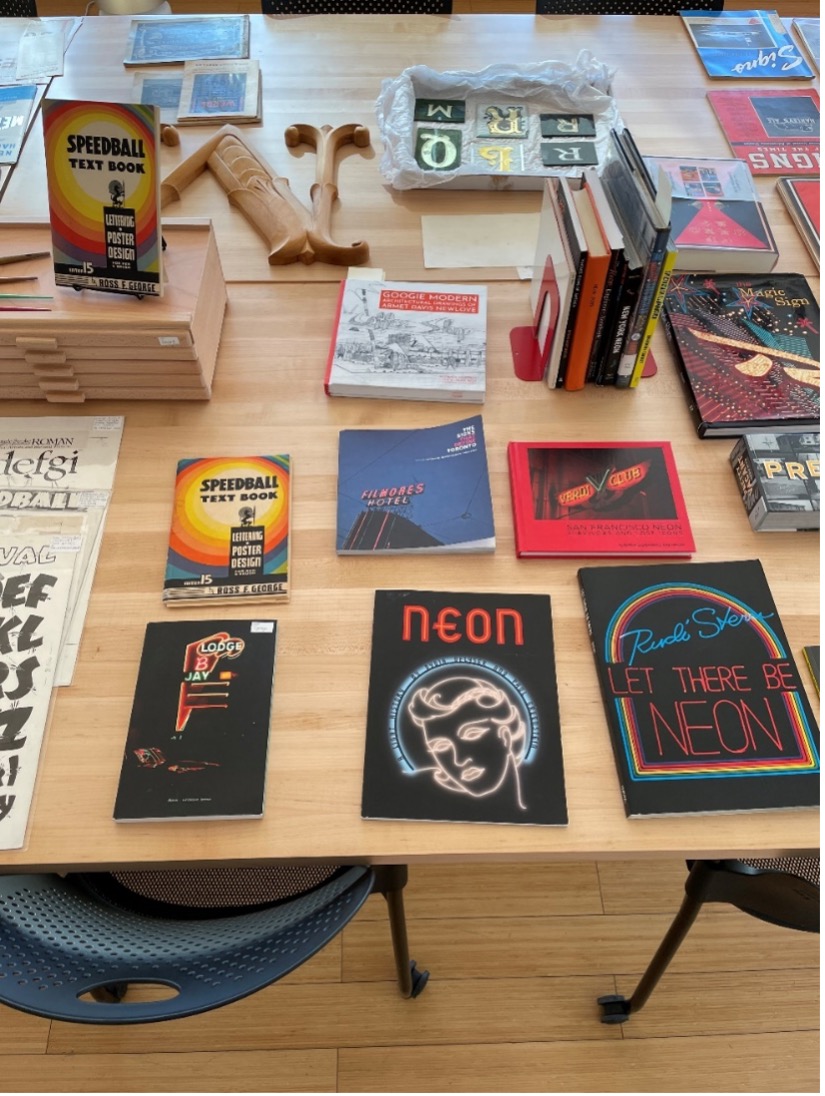
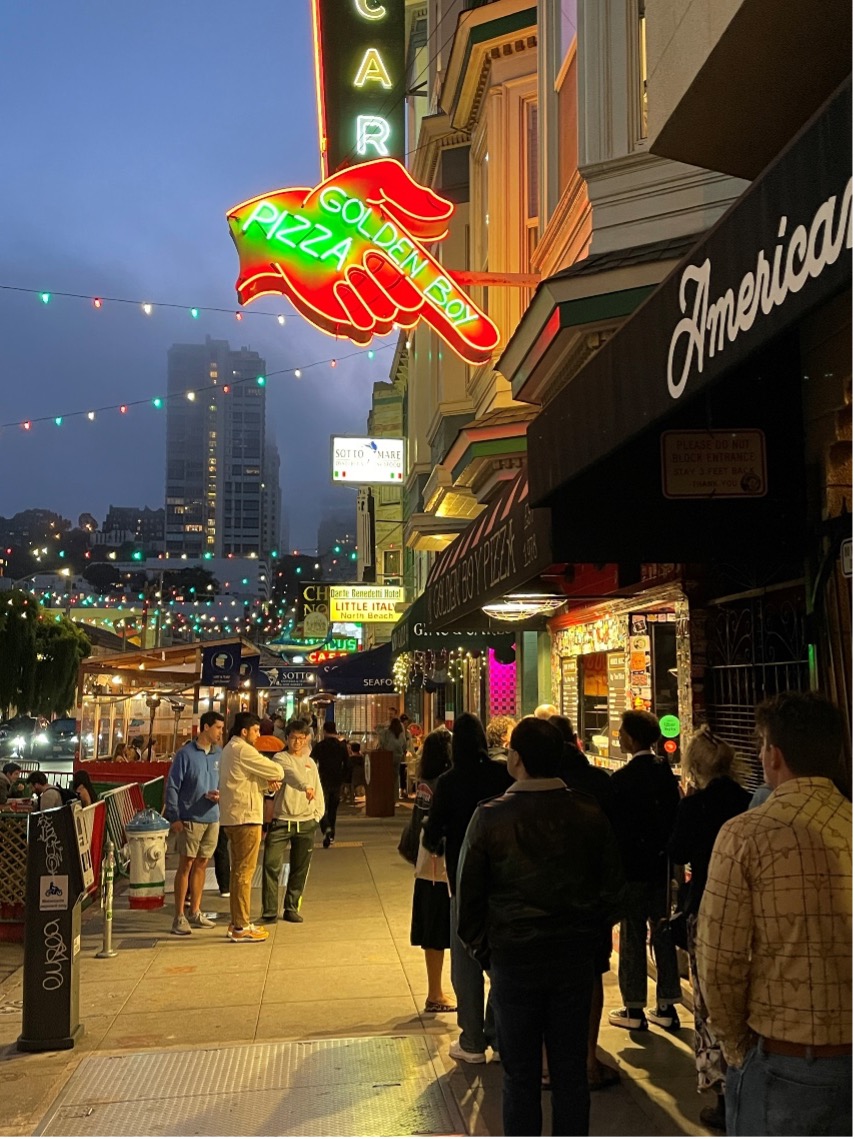
Arts & Letters Club
In October, Philip and Kurt presented some of the signs included in the book to the Arts & Letters Club of Toronto as part of their weekly Literary Lunch series. The Club began in 1908 and caters to creative and performing artists as well as arts lovers. Before the presentation, Club members had lunch with the co-editors in the Great Hall and asked lots of thoughtful questions about the changing face of Toronto’s streets.
Awards Season
Fall turned out to be awards season, starting with the nomination for the Heritage Toronto Book Award. The 25 nominees in the category included a wide range of books the covered Toronto’s rich cultural heritage. The awards ceremony was held on October 30 at the Carlu, with mayor Olivia Chow kicking off the festivities. Congratulations to winner Daniel Ross on his book “The Heart of Toronto” which covers the remaking of Downtown Yonge Street through civic activism and corporate power.
A second nomination for the exhibition at the University of Waterloo was announced for the Waterloo Region Art Awards. The awards honour artists, musicians, writers, event organizers, volunteers, and supporters. Kurt attended the event which was held at THEMUSEUM in downtown Kitchener. Several nominees gave performances between awards, making for a memorable night of dance, comedy, and music.
ERA’s Signage Portfolio & Next Steps
ERA’s work on historic sign projects continues to expand including advising on the restoration of the iconic Honest Ed’s red alley arrow, the redesign of the Regent Theatre sign, and updates to the signage guidelines in the Historic Yonge Street Heritage Conservation District that allow for a broader range of historic sign types.
Since the launch of the publication, The Signs That Define… project continues to live online through an active Instagram page. The page features additional stories and photos that did not make it into the book while also reaching a broader online audience. Be sure to follow and stay tuned for updates on the project and announcements of related events. If you have not already picked up a copy of the book or are looking for a gift, copies of the book are now available for purchase at the Spacing Store, both in person and online.
